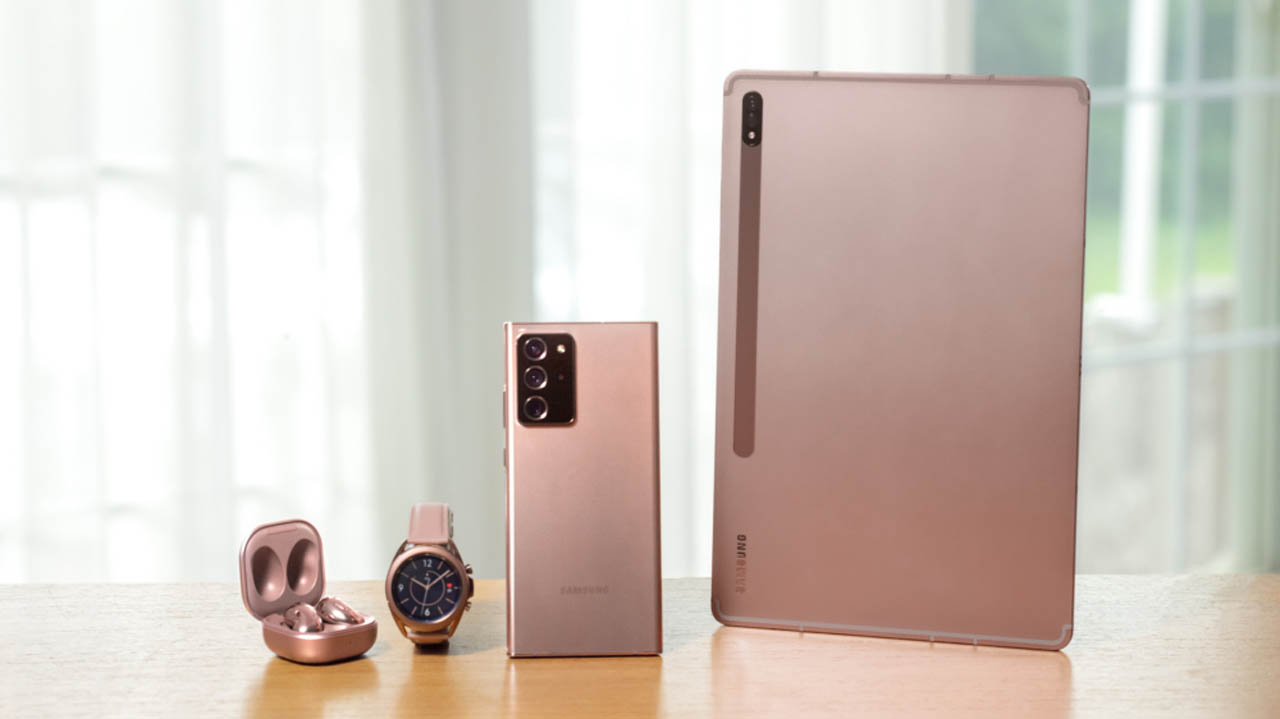Increasing quality and options in our tech ecosystems
 CREDIT: SAMSUNG NEWSROOM
CREDIT: SAMSUNG NEWSROOMSmartwatches, earbuds, tablets, phones and more continue to grow and develop into their own branded ecosystems.
Just as the world has progressed into 2023, technology continues to progress with it as well. Of course, wider spread technologies such as the growth of electric vehicles, the advancement of medical breakthroughs, the further development of city infrastructures, and more continue to amaze each day.
One major piece of technology that people use more than any other on a day-to-day basis, comes in the form of phones, earbuds, watches, and more. Some of the largest examples of developments in these spaces is their ability to work together.
Nowadays, watches can connect to phones, phones connect to our earbuds; it’s these developments that have created a whole space in the technological markets known as “ecosystems.” Of course though, brands want you to pick their devices and not the devices of their competitors and these companies are willing to do whatever they can to keep you in their bubble, often making it difficult for different brand’s tech to work with one another.
It’s because of this that people now need to really think about which ecosystem they want to join into beforehand. Right now, in the tech space, there are three mainstream combatants that dominate the space, consisting of Apple, Samsung, and Google.
The main question people need to ask themselves before jumping in is whether they want an Apple or Android phone. Without going into too much detail, Apple is often more user friendly and polished while being more expensive, while Android is often more customizable and willing to experiment more with newer concepts while usually being more budget friendly.
“I was pleasantly surprised by the processing power and capabilities that an Android phone offered,” said Mitchell Hughes, current student in Fanshawe’s computer programming and analysis program. “At the time, Android phones also offered more customization options for the consumer to tinker around with their phone.”
In terms of the ecosystems, Apple’s products fall in line similarly to their phones themselves. Again, these devices have very user friendly, polished, and refined looks and interfaces, while being able to charge a bit more than other companies because of it.
Their AirPods in particular dominate the earbud space and created major waves in the tech sector, creating the now modern idea of wireless earbuds. Their Apple Watch, Airpods, AirTags, and more, all make up their growing ecosystem. With each product in their line being able to seamlessly connect to their flagship iPhones.
“I know that Apple has an incredibly diverse tech ecosystem. Your iPhone can connect to your Mac- Book, smartwatch, Airpods and even CarPlay for some vehicles,” said Hughes. “As a consumer, it’s fantastic to see that a variety of brands offer ecosystem experiences.”
The major combatant when it comes to handheld technology (even beating out Apple for much of 2022 in terms of overall sales numbers) is Samsung. Samsung, which also spreads into home appliances, televisions, and more, has primarily been pushing their handheld devices. Similarly to Apple, Samsung has their Galaxy ecosystem consisting of their Galaxy Watch, Galaxy Buds, Galaxy Tab, and more.
“Currently with my Samsung phone, I am trying to break into the tech ecosystem they have in place,” Hughes said. “For example, the ranges in my apartment are Samsung branded, so it can actually connect directly to my phone, and I can control some functionality through my phone. Eventually I would like to get a Samsung branded smartwatch to further get involved in the ecosystem.”
Gaining steam in the space and slowly beginning to take some sales from both Apple and Samsung is Google. Of course known for their search engine, Google has been finding ways to inch their way into the tech space for years.
With their line of Pixel products including their Pixel phones, Pixel Buds, as well as their new Pixel Watch (which Google specifically bought out the company Fitbit for), Google has done what they can to jump into the space.
“My hope is that more brands will adapt to this new technology ecosystem idea, and implement new and creative ideas to attract new consumers and drive innovation to the industry,” said Hughes.
Deciding which ecosystem to invest in is easier said than done, with their being many benefits to each particular brand. No matter which option you go with, you’ll more than likely be happy with whichever experience you choose. It’s an exciting time for technology and a great time for consumers to benefit from the competition of these ecosystems.

















